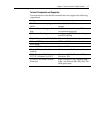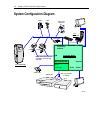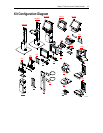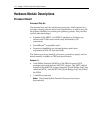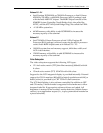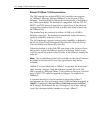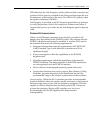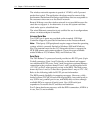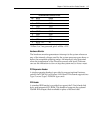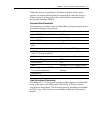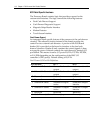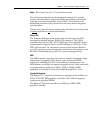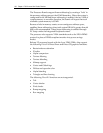
1-14 Chapter 1: 7401-2xxx and 3xxx Product Overview
The wireless networks operate at speeds of 1-2 MB/s with 2 percent
packet loss typical. The application developer must be aware of the
performance limitations and design applications that are acceptable to
the customer when run over the slower network.
Remote Wakeup over the wireless network is not possible because the
cards do not support it. An alternative is to use the system real-time
clock wake up at a scheduled time.
The wired Ethernet connection is not certified for use in configurations
where a wireless adapter is installed.
Universal Serial Bus
Two USB Type-A ports are provided on the terminal. USB Host
Controller support is provided in hardware on the Processor Board.
Note: Third party USB peripherals require support from the operating
system, which is currently limited to Windows 2000 and Windows
Xpe. The terminal must use the I/O Networks drivers to support the
NCR USB printer and scanner products. These drives are available
under Windows NT, Windows 2000, and Windows XPe.
Serial Ports
The 7401 Release 2.x processor boards provide two RS-232 ports (9-pin
D-shell connectors, Ports 1 and 2) directly on the board and support
two additional RS-232 ports. Ports 3 and 4 require an optional harness
connection to the processor board. Ports 1 and 3 can be supplied with
+12 V DC on Pin 9 when properly set up in the BIOS. The total power
drawn by Ports 1 and/or 3 must be no greater than 1 amp at 12 V+ DC.
Refer to the following table for RS-232 pin-out information.
The BIOS permits flexibility in mapping resources. However, a fully-
loaded system (2 PCMCIA cards that require IRQs, four serial ports in
use, USB in use, parallel port in use, and MSR) may not have enough
available IRQs to support all serial ports. Use a USB serial port
expander to overcome this PC architecture limitation.
Port 2 shares hardware resources with the IRDA connection; if IRDA is
in use, Port 3 is not available.




